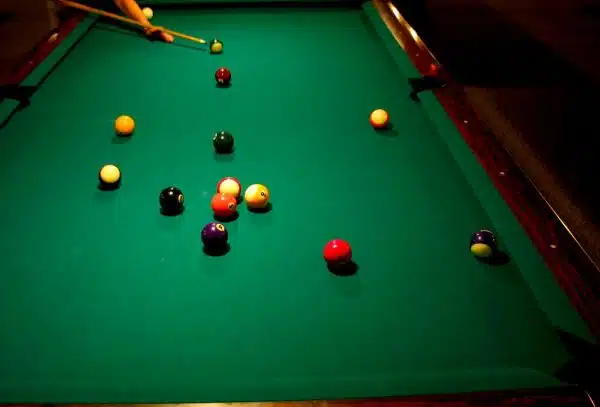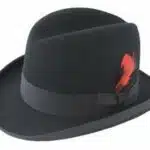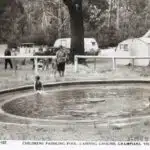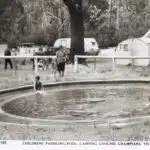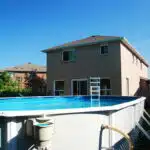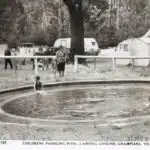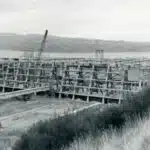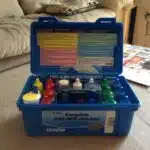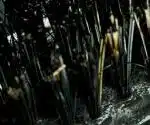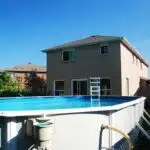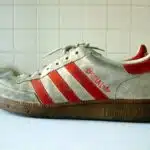As pool table technicians, we understand the importance of maintaining a clean and well-maintained pool table. One of the most critical aspects of maintaining a pool table is cleaning the felt surface. Over time, dirt, dust, and other debris can accumulate on the felt surface, which can affect the playing experience. Therefore, it is essential to know how to clean pool table felt properly.
Cleaning pool table felt requires a bit of knowledge and skill. You should avoid using harsh chemicals or abrasive cleaners that could damage the fabric of the felt. Instead, you should use gentle cleaners and techniques that will remove dirt and stains without harming the fibers or color of your pool table’s felt. In this article, we’ll provide you with some tips and tricks on how to clean pool table felt effectively so you can enjoy a smooth and enjoyable playing experience for years to come.
Understanding The Importance Of Cleaning Pool Table Felt
As a pool table technician, it is important to emphasize the significance of regular maintenance in keeping your pool table in top condition. One of the most crucial aspects of this maintenance is cleaning the felt. Without proper care, the felt can become damaged and worn, leading to a subpar playing experience.
Preventing damage to pool table felt starts with understanding how it can become damaged in the first place. Dirt and dust particles can accumulate on the surface, causing friction between balls and fibers. This friction leads to wear and tear on the felt, resulting in rips or holes that significantly detract from gameplay.
Regular cleaning helps prevent this damage by removing dirt and dust particles before they have a chance to cause harm. By following simple steps for maintaining your pool table’s felt, you can ensure that it remains in great condition for years to come. In the next section, we will discuss how to gather the necessary tools and supplies needed for this task.
Gather The Necessary Tools And Supplies
After understanding the importance of cleaning pool table felt, it’s time to gather the necessary tools and supplies. To effectively clean the felt, you will need specific types of brushes to remove any dirt or debris that may have accumulated over time. These brushes can be found at most pool table supply stores and come in various shapes and sizes. It’s important to choose a brush that is gentle enough not to damage the felt but strong enough to remove any stubborn stains.
Choosing the right cleaner is also crucial when cleaning pool table felt. You want a cleaner that is specially formulated for billiard tables and won’t leave any residue or damage the felt. There are many cleaners available on the market, so it’s important to do your research before purchasing one. Some cleaners require dilution with water, while others are ready-to-use sprays.
Once you have gathered all of your tools and supplies, it’s time to clear the table of any debris before beginning the cleaning process. This includes removing any balls, cues or other accessories from the table and sweeping away any loose dust or dirt. By clearing the table beforehand, you’ll be able to focus solely on cleaning the felt without worrying about anything else getting in your way.
Clearing The Table Of Any Debris
Now that you have gathered all the necessary tools for cleaning your pool table felt, it’s time to start with the basics: clearing any debris from the playing surface. This step is crucial to avoid damaging your felt during the cleaning process. Before you begin, make sure to remove any balls or other objects from the table and store them safely.
There are two different methods for clearing debris from your pool table felt: wet and dry. The wet method involves using a damp cloth to wipe down the playing surface, while the dry method involves using a brush or vacuum cleaner to remove dust and dirt. Both methods can be effective, but it’s important to choose one that works best for your specific situation.
To prevent debris from accumulating on your pool table felt in the first place, there are several best practices you can follow. First, always cover your table when not in use to keep dust and other particles from settling on the surface. Second, be mindful of what you place on top of your table – avoid placing food or drinks near the playing area. Finally, regularly clean and maintain your cue sticks to prevent chalk residue from building up on the felt. By following these tips, you can help ensure that your pool table stays in great condition for years to come.
As you clear debris from your pool table felt using either a wet or dry method, take care not to damage the delicate fibers of the fabric. Using a gentle touch and avoiding harsh chemicals or excessive force will help prolong the life of your felt. Once all debris has been removed, it’s time to move on to loosening any dirt or stains that may have accumulated on the surface – this will be covered in our next section about using a gentle brush.
Using A Gentle Brush To Loosen Dirt And Debris
As the saying goes, “a gentle touch can make all the difference.” This is especially true when it comes to cleaning your pool table felt. Using a gentle brush is an effective way to loosen dirt and debris without causing damage to the surface. However, it’s important to use proper technique and choose the best types of brushes for the job.
Proper technique when using a gentle brush involves starting at one end of the table and working your way across in small sections. Use light, circular motions to avoid pushing dirt further into the felt or causing any damage. It’s also important to avoid using too much pressure as this can cause fibers to break down over time.
When choosing a brush, opt for those made specifically for pool table felt. These brushes are typically softer than standard household brushes and have bristles that won’t snag or pull on the felt. Avoid using any type of abrasive brush or cleaning tool as these can cause significant damage to the surface.
To ensure you’re effectively using a gentle brush without causing damage, look out for signs of wear and tear on the felt surface. This can include discoloration, bumps or ripples in the fabric, or areas where fibers appear frayed or worn down. If you notice any of these signs, stop brushing immediately and seek professional assistance before continuing.
Transitioning into vacuuming the felt surface, it’s important to remember that using a vacuum cleaner with appropriate attachments is another effective method for removing dirt and debris from your pool table felt without causing damage.
Vacuuming The Felt Surface
Vacuuming is the most effective way to keep your pool table felt clean. However, it is important to use proper vacuuming techniques to avoid damaging the felt surface. When choosing the right vacuum for your pool table, it is best to select a lightweight and portable model that comes with a soft brush attachment.
To begin vacuuming the felt surface, start at one end of the table and work your way towards the other end in a straight line. Make sure to apply gentle pressure when using the vacuum to avoid snagging or pulling on the felt fibers. It is also important to move slowly and methodically across the surface of the table, paying close attention to any areas that may need more attention.
When finished vacuuming, take a moment to inspect the felt surface for any remaining debris or dirt particles. If necessary, you can use a soft-bristled brush attachment on your vacuum or a lint roller to remove any stubborn particles from the felt surface. Once you have thoroughly cleaned your pool table felt with the appropriate vacuuming techniques, you can move on to applying a gentle cleaner to further enhance its appearance and longevity.
Applying A Gentle Cleaner To The Felt
After vacuuming the felt surface of your pool table, it’s time to apply a gentle cleaner that will effectively remove any stains or dirt that may have accumulated over time. Choosing the right cleaner is important, as certain chemicals can damage the felt and may cause discoloration or other issues. It’s best to use a cleaner specifically designed for pool table felt, as these are usually formulated with gentle ingredients that won’t harm the delicate fabric.
When applying the cleaner, it’s important to avoid common mistakes that could damage the felt or leave behind residue. First, never pour the cleaner directly onto the felt surface – instead, apply it to a soft cloth or sponge and gently dab it onto the stained area. Be sure to use only a small amount of cleaner at a time, as too much can saturate the felt and make it difficult to remove later on.
After applying the cleaner, allow it to sit for a few minutes before blotting and dabbing stains with a clean cloth or paper towel. It’s important not to rub or scrub at the stain, as this can push it further into the fabric and make it more difficult to remove. Instead, use gentle motions and continue blotting until all traces of dirt and stains have been lifted from the surface of your pool table felt.
Blotting And Dabbing Stains
Cleaning pool table felt requires the use of blotting and dabbing stains to remove dirt and debris. Blotting with solvent is the first step in removing stubborn stains, as it helps to break up the dirt and grime. Once the solvent has been blotted, dabbing with a cleaner will help to remove the remaining stain and prevent it from spreading. Finally, blotting with a cleaner can help to remove any further residue and restore the felt to its original condition. As a pool table technician, it is important to take the time to properly blot and dab the felt to ensure a thorough and effective cleaning.
Blotting With Solvent
As a pool table technician, it is important to know how to effectively clean the felt on a pool table. Blotting with solvent is one method that can be used to remove stains and dirt from the surface of the felt. However, it is important to choose a suitable solvent and take precautions while blotting.
When choosing a suitable solvent for blotting, it is important to consider the type of stain or dirt that needs to be removed. For example, if there are grease stains on the felt, using a degreaser may be necessary. It is important to read labels carefully and choose a solvent that is safe for use on pool table felt. It is also recommended to test the solvent on an inconspicuous area of the felt before using it on a larger stain.
Precautions should be taken while blotting with solvent. First, make sure that there is adequate ventilation in the room where you will be working with solvents. Wear gloves and protective clothing to avoid skin irritation or chemical burns. Do not oversaturate the felt with solvent as this can damage the fibers and cause discoloration. Use a clean cloth or sponge to gently blot at the stain until it lifts away.
In conclusion, blotting with solvent can be an effective way to remove stains from pool table felt. By choosing a suitable solvent and taking proper precautions while blotting, you can ensure that your pool table stays looking great for years to come. Remember to always test solvents on an inconspicuous area before using them on larger stains.
Dabbing With Cleaner
As a pool table technician, it is important to have an arsenal of cleaning techniques to remove stains and dirt from the felt. Blotting with solvent is one method that can work wonders, but there are other ways to tackle stubborn stains. Dabbing with cleaner is another technique that can be effective in lifting away dirt.
Using different cleaners for dabbing can yield different results. For example, using a mild soap and water solution can be effective for general cleaning purposes. On the other hand, using a specialized pool table cleaner may be necessary for tougher stains or if the felt has not been cleaned in a while. There are advantages and disadvantages to both options, so it’s important to choose the right cleaner based on the specific needs of your pool table.
When dabbing with cleaner, it’s important to use a clean cloth or sponge and apply gentle pressure. Avoid oversaturating the felt as this can damage the fibers and cause discoloration. Take care to rinse off any excess cleaner after dabbing to prevent residue buildup. With proper technique and careful consideration of which cleaner to use, dabbing can be an effective way to keep your pool table felt looking like new.
Blotting With Cleaner
As a pool table technician, removing stains and dirt from the felt is crucial in maintaining the quality of the table. Blotting with cleaner is a common technique that can help eliminate stubborn stains. However, it’s essential to use proper blotting techniques to avoid damaging the fibers of the felt.
Using different cleaners for blotting can yield varying results. It’s important to choose the right cleaner based on the type of stain and material of the felt. A mild soap and water solution can be effective for general cleaning purposes, while specialized pool table cleaners may be necessary for tougher stains or if the felt has not been cleaned in a while.
Proper blotting techniques involve using a clean cloth or sponge and applying gentle pressure to avoid oversaturating the felt with cleaner, which can cause discoloration and damage the fibers. After blotting, rinse off any excess cleaner to prevent residue buildup. By following these proper techniques and choosing appropriate cleaners, your pool table will remain looking new for years to come.
Removing Tough Stains With A Specialized Cleaner
To clean pool table felt, sometimes plain water and a soft-bristled brush may not be enough to remove tough stains. In such cases, specialized cleaner options can come in handy to get rid of stubborn marks on the felt. These cleaners are designed specifically for use on pool table felt and work by breaking down the stain molecules without damaging the fabric.
When it comes to techniques for stain removal using specialized cleaners, there are a few things to keep in mind. First, always read the instructions carefully before using any cleaner. Some cleaners may need to be diluted before use or require protective gear like gloves and masks. Second, test a small area of the felt with the cleaner first to ensure that it doesn’t cause any discoloration or damage. Third, avoid rubbing too hard or using abrasive materials as this can damage the fibers of the felt.
Here are four popular specialized cleaner options that pool table technicians recommend:
- Simonis X-1 Cleaner – This is a spray-on cleaner that works well on most types of stains.
- Aramith Billiard Ball Restorer – This is a two-part solution that can restore both pool balls and felt.
- Felt Magic Stain Remover – This is a gentle but effective cleaner that can remove even old stains.
- Pool Table Magic Stain Remover – This is another spray-on option that can tackle most types of stains.
Once you’ve chosen your preferred cleaner, apply it according to the instructions and let it sit for a few minutes so that it can penetrate deep into the fibers of the felt and break down the stain molecules. After this step, you’ll be ready to move on to rinsing and drying your pool table felt thoroughly, leaving it looking clean and fresh once again!
Letting The Cleaner Sit For A Few Minutes
After applying the specialized cleaner on the tough stains, we recommend pre-treatment of the entire felt surface. Pre-treating will aid in removing any remaining debris that could lead to future stains. This step is essential in ensuring a thorough cleaning process and prolonging the longevity of your pool table felt.
When it comes to choosing the best cleaner for your pool table felt, there are many options available. We suggest using cleaners specifically designed for pool tables as they are gentle on the fabric and effective at removing dirt and stains. Avoid using harsh chemicals or detergents, as these can damage the felt fibers and leave residue behind.
Once you have applied the cleaner and pre-treated the surface, it’s time to rinse off any remaining residue with clean water. Rinse thoroughly to ensure no cleaning solution is left behind. Leaving cleaning solution on the felt can cause discoloration or even damage to its surface. Properly rinsing ensures that your pool table felt remains clean and free from any harmful chemicals.
Rinsing The Felt With Clean Water
1.Before beginning the process of cleaning the felt on a pool table, it is important to ensure the table is properly prepared by clearing it of any objects and checking it for any damage.
2.Once the pool table is ready, the felt should be vacuumed with a brush attachment to remove any debris or dust.
3.To clean the felt, a mixture of mild detergent and warm water should be used and lightly sprayed or dabbed on the felt with a cloth.
4.Once the detergent has been worked into the felt, the surface should be rinsed with clean water and left to air dry.
Preparing The Pool Table
As a pool table technician, it is important to prepare the pool table before rinsing the felt with clean water. One must ensure that the table is completely clear of any debris or objects that may cause damage to the felt during cleaning. This includes removing all balls, cue sticks and other items from the table surface. Additionally, one should also remove any protective pool table covers or other materials covering the felt.
After ensuring that the pool table is free of any potential hazards, the next step is to inspect the felt installation for any tears or holes. If there are any damages present on the felt, it is important to repair them prior to cleaning. This will prevent further damage from occurring during cleaning and prolong the life of your pool table felt.
Lastly, one should use caution when handling any tools or equipment during this process as rough handling may cause unnecessary damage to both your pool table and its respective components. Proper preparation ensures that cleaning can be done safely and effectively, ensuring a longer lifespan for your valued investment.
Cleaning The Felt
Before proceeding to rinse the felt with clean water, it is essential to ensure that the pool table has been adequately prepared. This means clearing the playing surface of any debris or objects that could cause damage during cleaning. As a pool table technician, it is our responsibility to take precautionary measures and remove all balls, cue sticks, and other items from the table surface. We should also check for any protective covers or materials covering the felt and remove them as well.
Once we have ensured that there are no potential hazards on the pool table, it’s time to move on to inspecting the felt installation for any tears or holes. Any damages present on the felt must be repaired before cleaning to prevent further damage from occurring. By taking this step, we can prolong the life of your pool table felt while ensuring that it remains in pristine condition.
After inspecting and repairing any damages present on the felt, we can now proceed with rinsing it with clean water. However, preventing damage doesn’t end there; drying methods are just as crucial in maintaining your pool table’s condition. As a pool table technician, I always recommend using a soft cloth or towel to gently pat down excess moisture from the felt. Avoid using heat sources such as hairdryers or fans as they may cause shrinkage or damage to your pool table felt. With proper preparation and drying methods, we can guarantee a longer lifespan for your valued investment.
Blotting Excess Water
Blotting Excess Water:
As the saying goes, “a stitch in time saves nine.” Similarly, taking prompt action to blot excess water from your pool table felt can prevent severe water damage. To do this step correctly, you need a clean and dry towel or cloth. Start by gently pressing on the damp areas of the felt with the cloth to blot out as much water as possible. Avoid rubbing or scrubbing the felt as this could further damage it.
Next, use a hairdryer set on low heat to blow away any remaining moisture that might have seeped into the fibers of the felt. Hold the dryer at least six inches away from the felt and move it around slowly to ensure even drying. Do not let it come into contact with the felt for too long at one spot as this could cause shrinkage or discoloration.
Preventing water damage is essential in maintaining a pool table’s longevity, especially if you are using it frequently. The process may seem tedious and time-consuming, but it is necessary for proper maintenance. In addition, skipping steps or using incorrect cleaning methods could result in costly damages or even replacement of the entire pool table felt. Once you have successfully blotted out excess water and used a hairdryer to dry out any remaining moisture, you can proceed to allow the felt to air dry naturally before moving on to other cleaning steps.
Allowing The Felt To Air Dry
After completing the cleaning process, it is important to allow the felt to air dry completely. Drying the felt properly will prevent mold growth and maintain its quality over time. One of the most effective ways to dry pool table felt is by using a fan or air conditioning unit. This method ensures that the felt dries evenly and quickly.
Another technique for drying pool table felt is by laying a towel over it and pressing down gently. The towel absorbs any excess water from the felt, which speeds up the drying process. It is important to change the towel regularly until all moisture has been removed from the felt.
It may be tempting to use a hairdryer or other heat source to speed up the drying process, but this can damage the felt fibers and cause shrinkage. Therefore, it is highly recommended not to use any form of heat when drying pool table felt. With patience and proper drying techniques, your pool table will have clean and fresh-smelling felt in no time!
Once the pool table felt is thoroughly dried, it’s time for brushing it gently with a specialized brush. Brushing removes any remaining dust or debris that might have accumulated on top of your newly cleaned surface. Just remember not to rush this step as brushing too hard can cause damage or pull out fibers from your pool table’s surface.
Brushing The Felt Once It’s Dry
After the pool table felt has completely dried, it is time to brush it. Choosing the right brush is crucial as it can either help maintain or damage the felt. A brush with soft bristles should be used to avoid damaging the fibers of the felt. Brushes with hard bristles can cause bald spots on the cloth, which will lead to further damage and repair costs.
When brushing the felt, start from one end of the table and work your way to the other end. Use gentle strokes in a straight line and avoid applying too much pressure. Brushing in a circular motion can damage the felt, so always keep it in a straight line. This technique also helps remove any chalk dust or debris that may have settled on the surface.
Preventing future damage to pool table felt is essential for its longevity. To do this, always cover your table when it’s not in use. This prevents dust and debris from settling on the felt, causing unnecessary wear and tear. Additionally, covering your table protects it from accidental spills or scratches caused by pets or children playing around it. Remember that prevention is always better than repair costs, so invest in a quality pool table cover to protect your investment.
Covering The Table When Not In Use
As the saying goes, “an ounce of prevention is worth a pound of cure.” This is especially true when it comes to protecting your pool table felt. One of the best ways to prevent damage and preserve quality is by using protective covers. Not only do they shield your table from scratches, spills, and dirt, but they also add an extra layer of insulation against temperature changes and humidity.
When selecting a cover for your pool table, make sure that it fits properly and has a soft underside to avoid any potential scratching or harm to the felt surface. You can also opt for custom-made covers that are designed specifically for your table dimensions. In addition to protective covers, there are other storage solutions available that can help keep your table in pristine condition. For instance, storing accessories such as balls, cues, and racks in dedicated drawers or cabinets can help reduce clutter on the playing surface.
By taking these preventative measures, you can extend the life of your pool table felt and protect your investment for years to come. However, even with careful use and storage, regular maintenance is still necessary for long-term care. In the next section, we will discuss some essential steps you can take to keep your pool table in top condition over time.
Regular Maintenance For Long-Term Care
As a pool table technician, I have witnessed countless instances of pool table felt damage due to neglect and improper cleaning. Prevention is key when it comes to maintaining the longevity and quality of your pool table felt. Covering the table when not in use is important as it prevents dust, debris, and pet hair from settling on the surface, which can cause stains and wear over time.
However, regular maintenance through proper cleaning techniques is equally essential. While some individuals may opt for DIY cleaning methods, it’s important to note that professional cleaning services are available for those who seek optimal results. Professional cleaners have access to specialized equipment and products that are specifically designed for pool tables, ensuring a thorough and effective clean without causing any damage.
While DIY methods such as vacuuming or brushing may seem like an easy solution, they can actually cause more harm than good. Excessive brushing can wear down the fibers of the felt, while vacuuming can pull at loose threads or even tear the fabric. Furthermore, using household cleaning products or chemicals can lead to discoloration or permanent damage to the felt. For those who value their pool tables and want them to last for years to come, investing in professional cleaning services is a worthwhile choice.
Remember that proper prevention and maintenance are crucial factors in preserving your pool table felt’s quality and lifespan. By covering your table when not in use and seeking out professional cleaning services when necessary, you can ensure that your pool table remains a source of entertainment for years to come without compromising its aesthetic appeal or functionality.
Conclusion
Pool table felt requires regular cleaning to maintain its condition and ensure a smooth playing surface. To clean the felt, gather necessary tools such as a soft-bristled brush, vacuum cleaner, and cleaning solution. Clear the table of any debris before using the brush to loosen dirt and debris. Vacuum the felt surface and allow it to air dry completely before brushing it once more. Covering the table when not in use is important to prevent further damage.
Some may argue that professional pool table cleaning services are unnecessary and that DIY methods are enough. However, while DIY methods can work in the short term, they do not provide long-term care for your pool table felt. Professional technicians have specialized equipment and knowledge to perform deep cleaning on the felt without causing damage. Additionally, they can detect any potential issues with the table’s structure or mechanics while performing maintenance.
In conclusion, regular maintenance of pool table felt is essential for optimal gameplay and longevity of your investment. Gathering necessary tools and supplies, clearing debris, gentle brushing followed by vacuuming are key steps in maintaining a clean playing surface. Covering the table when not in use is important for further protection against damage. While some may argue that DIY methods suffice, professional technicians provide long-term care through their specialized equipment and expertise.
Image Credits
- “UF Reitz Union Green Felt Pool Table Balls” by cdsessums (featured)

